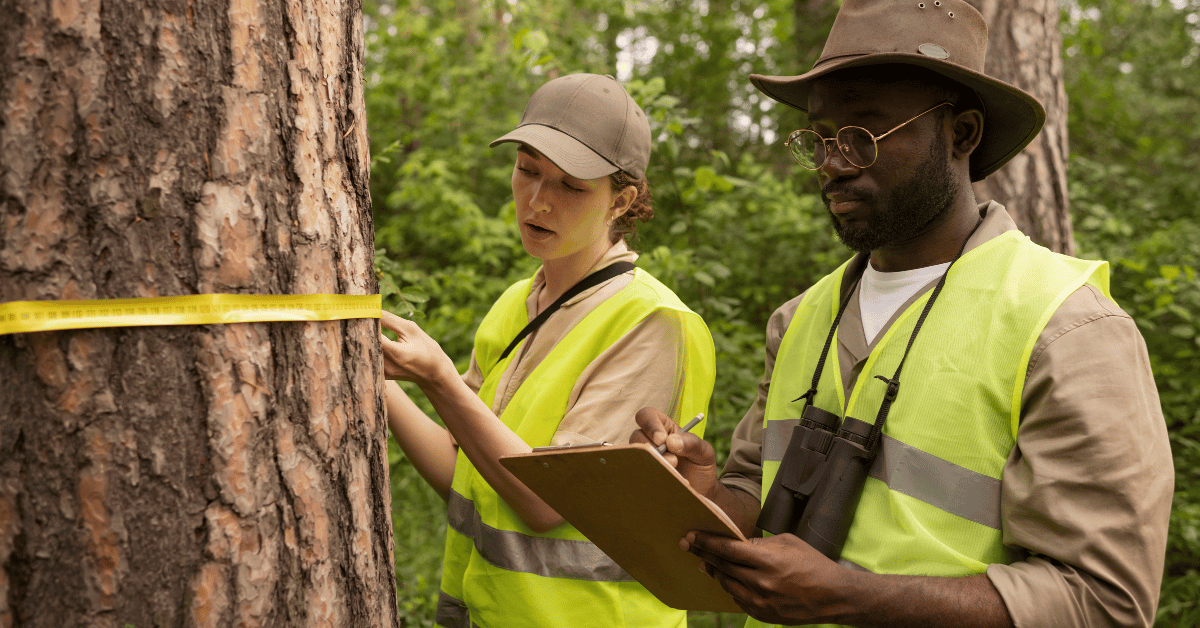Understanding the Forestry Development Authority: Deep Dive into Its Role, Challenges, and Modern Impact
In today’s rapidly changing environmental landscape, the Forestry Development Authority (FDA) has become a central figure in managing and protecting forest ecosystems, especially in countries where natural resources are both a blessing and a challenge. But what exactly does the Forestry Development Authority do? How does it balance conservation with economic growth? And why is its role more important than ever? This article provides an in-depth, updated look into the Forestry Development Authority, answering key questions and offering a comprehensive understanding for readers seeking real, actionable knowledge—not just recycled definitions.
What is the Forestry Development Authority?
The Forestry Development Authority (FDA) is a government-regulated institution responsible for managing a country’s forest resources. Its responsibilities span conservation, forest policy development, sustainable resource extraction, licensing, enforcement, and community outreach. Although the name “Forestry Development Authority” is most notably linked with Liberia, many countries have similar agencies under different names performing equivalent roles.
Forests are no longer viewed merely as sources of timber. They are recognized as carbon sinks, biodiversity havens, and essential parts of indigenous livelihoods. The FDA’s work is therefore not just about cutting or planting trees—it is about strategic, sustainable management of an entire ecological system that affects global climate, local communities, and national economies.
Why the Forestry Development Authority Matters Today
In an era dominated by environmental degradation, the role of forest authorities has shifted dramatically. No longer just log regulators, they are now stewards of climate stability and biodiversity protection. For nations like Liberia, the FDA is pivotal because approximately 43% of the country’s land is covered by forests. These forests are part of the Upper Guinean Rainforest, one of the world’s biodiversity hotspots.
However, balancing forest conservation with economic development is complicated. Countries depend on timber exports for revenue, yet cutting too much risks deforestation, biodiversity loss, and international backlash. The Forestry Development Authority operates at the center of this dilemma, striving to develop policies and programs that serve both environmental and economic goals.
Key Functions of the Forestry Development Authority
The Forestry Development Authority manages a wide array of responsibilities, each interconnected with national policy, global sustainability goals, and community welfare. Below is a structured look at the main functions of the FDA.
Function
Forest Resource Management
Details
Monitoring forests, creating management plans, mapping forest boundaries, and controlling logging operations.
Function
Conservation of Biodiversity
Details
Setting aside protected areas, managing national parks, and preserving endangered species.
Function
Sustainable Timber Trade
Details
Issuing licenses for logging, ensuring legal timber harvesting, and regulating timber exports.
Function
Community Engagement
Details
Working with local communities to promote forest-friendly livelihoods like eco-tourism or non-timber forest product collection.
Function
Law Enforcement
Details
Monitoring illegal logging, prosecuting forest crimes, and collaborating with other agencies to uphold forest laws.
Function
Research and Data Collection
Details
Collecting data on deforestation, biodiversity loss, carbon sequestration, and updating forest management strategies.
Function
Climate Action Programs
Details
Participating in carbon offset programs, such as REDD+ (Reducing Emissions from Deforestation and Forest Degradation).
The Evolution of the Forestry Development Authority
The Forestry Development Authority was not always what it is today. In many countries, forestry agencies started in the mid-20th century as bodies focused exclusively on logging permits and timber taxes. Over time, global awareness of environmental issues expanded these roles dramatically.
In Liberia, for example, the FDA was established in 1976 to consolidate all forestry activities under one umbrella. Before that, forest management was fragmented between multiple agencies, leading to inefficient oversight and rampant illegal logging. The creation of the FDA centralized these tasks, making it possible to implement broader conservation strategies while still regulating the timber economy.
Post-2003, following Liberia’s civil conflict, the FDA underwent significant reforms to align with international forest governance standards. It began collaborating with NGOs, international donors, and environmental watchdogs to implement transparent and accountable systems.
Modern Challenges Facing the Forestry Development Authority
Managing forests in the 21st century involves navigating complex, sometimes contradictory pressures. Below are some of the most pressing challenges the FDA faces today.
Illegal Logging
Despite regulations, illegal logging remains a significant issue. Forest authorities often lack the manpower, technology, or political backing to combat well-organized logging syndicates. Illegal timber not only depletes forests but also undermines legal timber markets.
Land Rights Conflicts
Many communities live on or near forested land without formal titles, leading to disputes when conservation projects or logging companies arrive. The FDA must work to balance indigenous rights with national conservation goals.
Climate Change
Climate change is both a threat and an opportunity. Droughts and wildfires destroy forests, but international carbon markets present financial incentives for conservation. The FDA needs to navigate this evolving landscape carefully.
Funding Constraints
Conservation and sustainable forestry require substantial funding for monitoring, enforcement, and community programs. Yet, forest authorities often operate with limited budgets, making it difficult to execute long-term strategies.
Transparency and Corruption
Like many regulatory bodies in developing countries, forest authorities are sometimes accused of corruption—issuing fraudulent licenses or turning a blind eye to violations. Building transparent systems is crucial for credibility.
Forestry Development Authority and Sustainable Development Goals (SDGs)
The United Nations Sustainable Development Goals (SDGs) set global targets for poverty reduction, environmental sustainability, and equitable growth. The FDA’s work directly contributes to several SDGs:
SDG 13
Climate Action
Contribution
Forests act as carbon sinks, helping mitigate climate change.
SDG 15
Life on Land
Contribution
Conserving biodiversity, combating desertification, and halting deforestation.
SDG 8
Decent Work and Economic Growth
Contribution
Creating sustainable jobs in forestry, eco-tourism, and non-timber products.
SDG 12
Responsible Consumption and Production
Contribution
Promoting legal timber trade and reducing resource exploitation.
The Role of Technology in Forestry Development
Technological advancement has revolutionized the way forest authorities operate. The Forestry Development Authority now leverages modern tools to enhance efficiency and accuracy.
Satellite Monitoring
High-resolution satellite imagery enables real-time tracking of deforestation. Platforms like Global Forest Watch provide tools that the FDA can use to monitor changes in forest cover.
Drones
Drones are increasingly deployed to monitor remote forest areas that are hard to reach by ground patrols.
Digital Licensing Systems
Blockchain and other secure digital technologies help eliminate corruption in the logging permit process by making records tamper-proof.
Mobile Applications
Community members can use mobile apps to report illegal logging or forest fires, creating a more participatory forest management system.
Case Study: Community Forestry
One of the FDA’s landmark strategies is the promotion of Community Forestry. This model allows local communities to manage portions of forestland under regulated conditions. Instead of large-scale industrial logging, community members engage in small-scale, sustainable extraction activities while protecting the forest’s biodiversity.
Benefits of Community Forestry
- Empowers local communities with decision-making rights.
- Reduces poverty by providing direct access to forest resources.
- Enhances forest conservation through localized monitoring.
- Reduces conflicts between governments, companies, and residents.
Limitations of Community Forestry
- Requires extensive training and capacity building.
- Risk of elite capture—where local elites dominate benefits.
- Can be undermined by external commercial pressures.
The Future of the Forestry Development Authority
Looking ahead, the Forestry Development Authority must continue to evolve. Its role will likely expand to include new areas such as:
Carbon Credit Markets
Global carbon trading presents new financial opportunities for forest-rich nations. By preserving forests, the FDA can help generate carbon credits to sell on international markets, providing revenue while promoting conservation.
Eco-Tourism Development
Forests are not just about timber. Eco-tourism offers a way to monetize conservation through sustainable tourism, which can create jobs and promote cultural heritage.
Education and Youth Engagement
Educating the next generation about the importance of forests is essential for long-term sustainability. Initiatives like forest education programs in schools can build a conservation-minded citizenry.
Partnerships with the Private Sector
By collaborating with responsible timber companies and conservation NGOs, the FDA can share the burden of forest management and amplify its impact.
Final Thoughts
The Forestry Development Authority is more than just a bureaucratic institution—it is a guardian of natural heritage, a regulator of economic activities, and a key player in global climate resilience. As the world shifts toward sustainability, the FDA’s role will only become more critical. However, success will depend on transparency, technological adoption, local involvement, and a careful balancing act between conservation and development. For anyone interested in environmental governance, understanding the FDA is not just informative—it’s essential.
Read More: https://2amagazine.co/telecom-foundation/
FAQs
What does the Forestry Development Authority do?
The FDA manages forests by regulating logging, protecting biodiversity, engaging communities, and combating illegal activities.
Why is forest management important?
Forests support biodiversity, regulate the climate, and provide livelihoods. Poor management leads to deforestation and ecological collapse.
Can the FDA stop illegal logging?
The FDA works to curb illegal logging through law enforcement, technology, and community partnerships, but challenges remain.
What is community forestry?
Community forestry gives local communities rights to manage forest areas sustainably, benefiting both people and the environment.
How does the FDA contribute to climate change solutions?
By conserving forests, the FDA helps sequester carbon, reducing global greenhouse gas concentrations.
Does the FDA issue logging permits?
Yes, the FDA issues permits for legal logging operations and monitors compliance to ensure sustainability.







